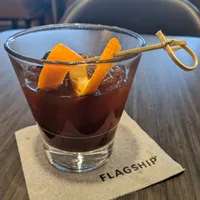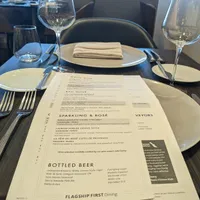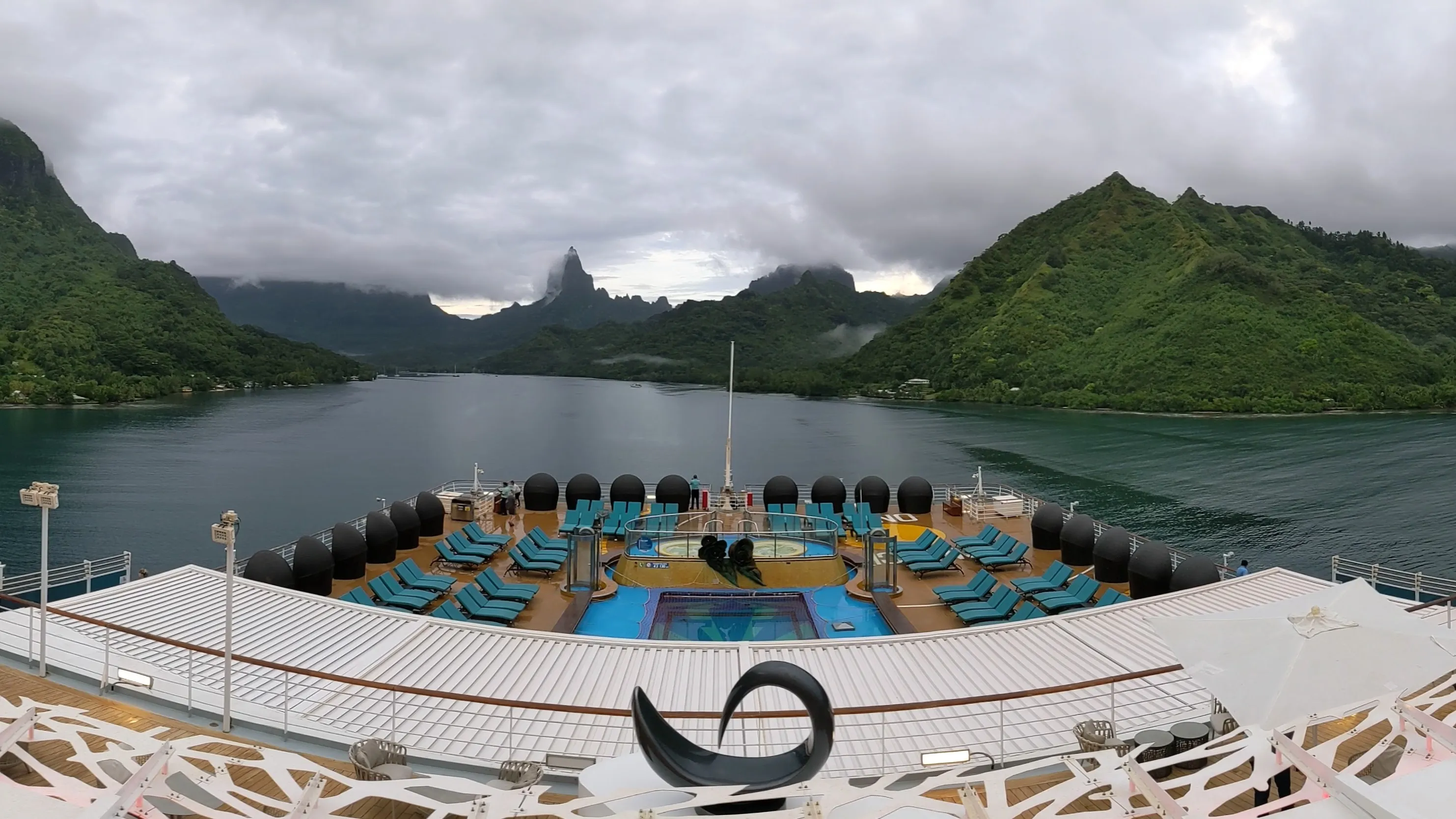

How to Find Award Flights
In this month-long trip, I flew from the US to Australia, visiting Sydney and Brisbane before sailing back across the Pacific with stops in New Caledonia, Fiji, French Polynesia and Hawaii. Overall, I got to experience $18,600 in retail travel using the points from roughly 2.5 credit card signup bonuses and $1,006.10 in cash out of pocket. In addition, nearly all the food was free or included.
Booking the Essentials
Landing a Free Cruise
Cruise ships have casinos and they are always looking for players. If you have casino status, you can often parlay that into a free cruise.
To get my offer, I…
- Applied for a Wyndham Business Earner credit card.
This grants Wyndham Diamond status and IMO is one of the best cards on the market. - Matched my Wyndham status to Caesar’s Diamond online.
They are partners and this counts as an “earned” status. - Submitted a Carnival Fun Match with a picture of your Caesars status.
A screenshot usually works.
A few weeks later, I had an offer for a balcony cabin, good on any cruise with availability.
I chose a 22-day transpacific sailing from Australia to Seattle via New Caledonia, Fiji, French Polynesia, and Hawaii. But before I could book the cruise, I needed an Australian visa and an affordable flight…
Applying for an Australia Visa
Australia has a pretty simple Electronic Travel Authority program. If granted, the visa allows travel to Australia during a one year period, no more than 3 months at a time.
US passport holders can apply via an app (Apple Store, Google Play). You scan the chip in your passport, take a picture, pay a small fee and submit. Most people get their visa approved within five minutes. I did it around midnight and booked my flight and cruise a few minutes later.
Finding a Flight
In looking for a flight, I had a few key criteria.
- Business class or better.
20 hours in economy. Nope. - Bookable with AAdvantage miles or AMEX points.
No cash fares. Chase points might have worked. - Arrive 3-6 days before the cruise.
Time to sight see, cushion to fix things if something went wrong. - Flexible cancellation in case things fell apart.
First cruise, first international trip in 8 years, covid testing requirements and so on. - End in Brisbane, Sydney, Melbourne, or Auckland and start in the US.
The cruise started in Brisbane, but short haul flights are easy.
When booking flights, I usually use five tools.
- Flight Connections lets you see all the routes for a city.
This lets you know which airlines and alliances fly where and informs the rest of the search. - SeatSpy lets you see an entire year of award availability for select carriers on a single leg route.
Show me all American availability from DFW to SYD for the next year. - United’s Calendar lets you see a month of availability at a time for Star Alliance partners.
Show me all Star Alliance availability from DFW to SYD for the next month. - American’s Award Map shows flights given date, starting airport and destination region.
Show me all the flights to the South Pacific from CMH on 4/6/23 for less than 100,000 miles. - Points.me searches all airlines and all reward programs for flights on a given date and route.
Searches are slow and need exact src/dest/date so this is often used as a sanity/spot check.
The best I found was an American Airlines 777 flight from Los Angeles to Sydney:
- 78k miles for business class
- 90k miles for Flagship First
Flagship First is the last true first class service offered by a domestic airline and it is going away in 2024. I’d never flown international first. With the prices so close and it being a little bit of history, I decided to spring for it.
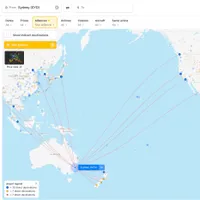
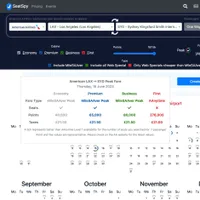
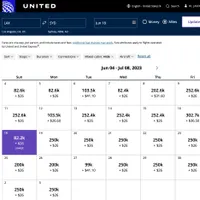
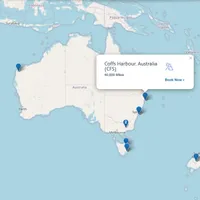

To and Around Australia
Flagship First to Sydney
For the trip, I would be flying from:
- Columbus (CMH) to Dallas/Fort Worth (DFW) in the morning.
- Dallas/Fort Worth (DFW) to Los Angeles (LAX) in the early evening.
- Los Angeles (LAX) to Sydney (SYD) in Flagship First overnight.
Each of the first two flights consisted of a three-hour flight in domestic first followed by a four-hour layover. The final flight from Los Angeles to Sydney was 15 hours and crossed the international date line, and so I arrived two days after I left.
The retail cost of this flight was around $14,500, and I paid 90,000 American Airline miles. It’s tempting to call this a $14,500/90000 = 16.1 cents per mile redemption. That sounds pretty good since blogs tend to peg AA miles around 1.3 cents per mile.
However, on the very same flight, there were Flagship Business seats for sale for 78,000 miles or roughly $7,000 and that works out to 9 cents per point. These seats are also lie flat and frankly, good enough. Given more flexibility, it may have even been possible to get this price down to 60-70k miles for a comparable flight.
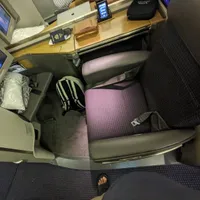
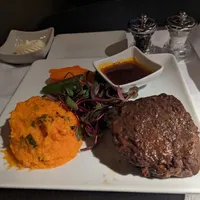
Flagship Lounges
American Airlines has three levels of lounge experience.
- Admiral’s Clubs are their standard lounges.
- Flagship Lounges are the premium lounges, generally for premium long haul international travel.
- Flagship First Dining is an even more exclusive dining service within some Flagship Lounges.
On this trip, I was able to experience the Flagship First Lounges in Dallas and Los Angeles as well as the Flagship First Dining in Dallas. LAX used to offer Flagship First Dining but has remained closed since the pandemic.
The Flagship Lounges are noticeably better than those by Centurion and Capital One, as well as most domestic priority pass lounges. Crowds were much smaller and the food on their buffets looked and tasted incrementally better. The LAX lounge, which had particularly nice ambiance, even had a poke bowl station where an attendant would make you a custom bowl. Overall, I would definitely prefer these to most other domestic lounges, but I wouldn’t pay extra to access one if I already had an open Centurion nearby.

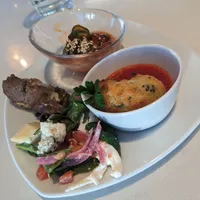

Flagship First Dining
The Flagship First Dining in Dallas was an excellent fine dining experience but arguably a poor lounge substitute.
Speaking preferentially, as a solo traveller, what I really want in an airport respite is somewhere I can get away from everything. To grab some food, and find some place comfortable to work until my next flight, ideally with a nice view of the planes passing by outside. Sometimes, I have a few hours and other times its more of a grab and go situation. Most lounges are designed to accommodate exactly this type of behavior with self-service food, comfy chairs, generous counter space for food alongside a laptop, lots of power outlets and usb jacks and so on.
Flagship First Dining lacks most of this, instead providing a fine dining experience with excellent food, drinks, and service. If you’re going this route, you should probably have plenty of time, some company, and no desire to get to work since they don’t have power outlets or much space for a laptop once the zealously plated food starts to arrive. I found it was an excellent service, and nice to experience once, but at times a challenge for my inner Lebowski.
The Good
- Excellent food and drinks.
- Top-notch service.
- Quiet reserved space.
The Bad
- Complex and arbitrary rules governing access.
- Formal dining, but you’re dressed for comfort on a 30-hour flight.
- Fewer amenities and inferior view compared to main lounge.
- Significant tipping is probably expected.
Is Flagship First Dining for you?
- Do you have time for a three-course meal?
- Would you prefer an orchestrated meal or a quiet corner?
- Do you plan to eat on your flights?
Hint: Flying on a full stomach is a recipe for discomfort.

